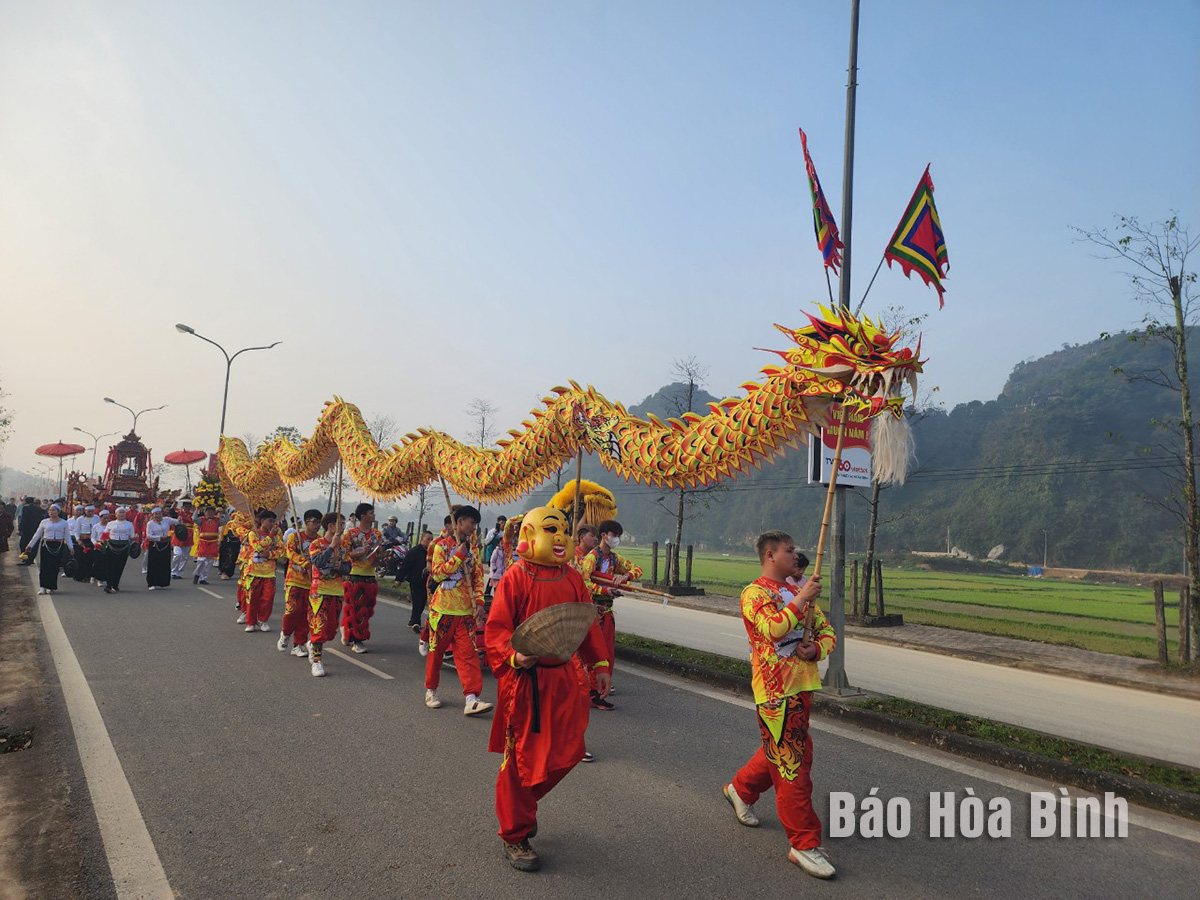
Hoa Binh province has paid due attention to preserving and managing local cultural relic sites in tandem with branching out tourism, contributing to the socio-economic development.
Chua Tien (Tien pagoda) festival in Lac Thuy district is
organised annually to preserve and promote the values of the relic complex.
Notable preservation efforts have been seen in
the Chua Tien landscape and relic complex, which boasts untouched beauty with
magical stalactite caves.
According to Vice Chairman of the Lac Thuy
district People’s Committee Nguyen Ngoc Van, the Chua Tien (Tien pagoda) scenic
spot and relic complex has 21 relics, including historical, cultural,
archaeological ones and landscapes. Outstanding caves such as Mau Long, Tam Hoa
and Tien have lured many visitors.
The construction of Huong Binh cable line,
connecting the pagoda with the Huong pagoda complex in My Duc district, Hanoi,
which is underway, will open up a new direction for local tourism development,
he said, adding the Tien pagoda festival was organised at the provincial level
in 2024, meeting local residents’ needs for cultural and religious activities,
and helping introduce ethnic cultural heritage and bolster local tourism
development.
Deputy Director of the provincial Department of
Culture, Sports and Tuorism Luu Huy Linh said that local relics and scenic
spots have been well managed and renovated, with 293 historical-cultural relic
sites in the province’s list of protected ones, and 112 classified as national
relic sites (41) and provincial-level sites (71).
Several historical-cultural relics have become
not only tourist attractions but also destinations for revolutionary education
such as Muong Khoi war zone, an archaeological site in Trai hamlet, Thach Yen
revolutionary base, and Dau Rong cave scenic complex, he said.
However, he pointed out several challenges to
the management of local relic sites, including limited awareness of several
party committees and administrations, a shortage of capital for restoration and
renovation work, as well as low efficiency of the communications work.
With a view to effectively carrying out the
province’s policy to create a breakthrough in development through preserving
and promoting the values of ethnic culture, improving the efficacy of the state
management and mobilising resources for the renovation work, the standing board
of the provincial Party Committee issued a directive dated June 28, ordering
enhanced communications work on related documents and policies.
According to Linh, departments, branches,
sectors and the People’s Committees of districts and Hoa Binh city must step up
state management over local historical-cultural relic sites, allocate budget
for and build mechanisms and policies to mobilise resources for the restoration
work, and focus on the study and popularisation of the values of relic sites
belonging to the "Hoa Binh Culture”. He also noted the need to study the
application of science technology in the preservation and promotion work, and
develop high-quality human resources in the area.
Phong Phu commune, Tan Lac district of Hoa Binh province, is widely regarded as the cultural heartland of the Muong ethnic group. Among its many traditional communities, Luy Ai hamlet (formerly Ai hamlet) stands out as a rare location where the customs and way of life of the Muong Bi people remain largely intact.
The Truong Kha temple festival, a distinctive cultural event held every three years in Vu Ban township, Lac Son district, returned recently with vibrant rituals and folk traditions of the Muong people. Located next to the Buoi River in the Muong Trao fields, the Truong Kha Temple is dedicated to the three Kun Dol deities, revered for teaching farming techniques, irrigation, weaving, and protecting the harvest.
The demand for spaces serving community activities of residents in various areas across Hoa Binh city has been satisfied as local cultural houses now feature modern, spacious facilities thanks to the effective implementation of Resolution No. 49/NQ-HDND issued on December 28, 2021 by the city People's Council, which approved the plan for reorganising, converting, and allocating land for the construction, repair, and expansion of cultural houses in Hoa Binh’s villages and residential areas until 2025.
At the end of May, the Hoa Binh Provincial Ethnic Arts Troupe organized a series of performances for residents in Region 2 and Region 3 communes across the province. Bringing art to ethnic communities in remote, isolated, and especially disadvantaged areas has become a meaningful activity. These are not merely artistic performances but also journeys to disseminate cultural values, enrich spiritual life, and contribute to preserving the cultural identity of ethnic minorities.



